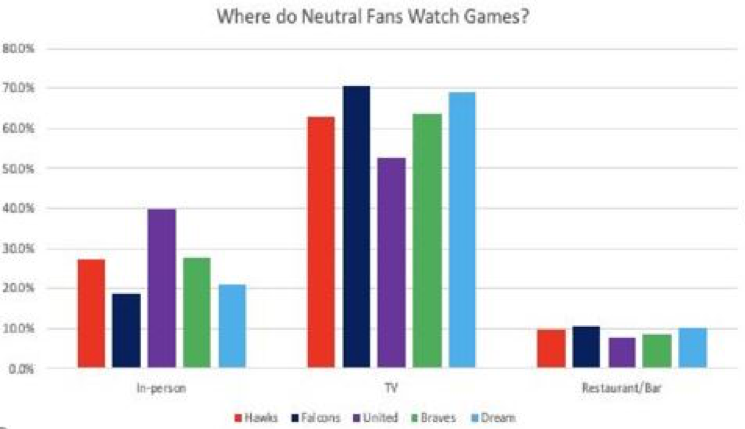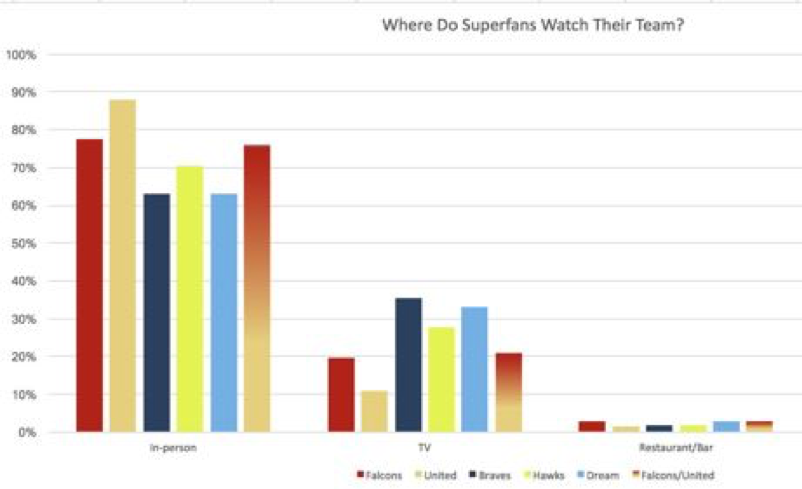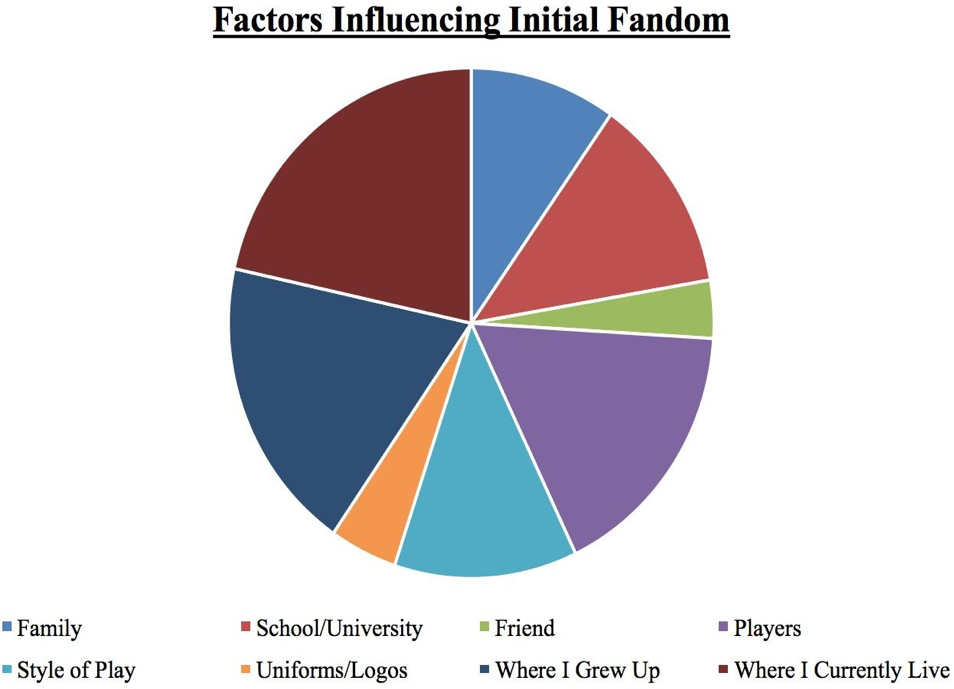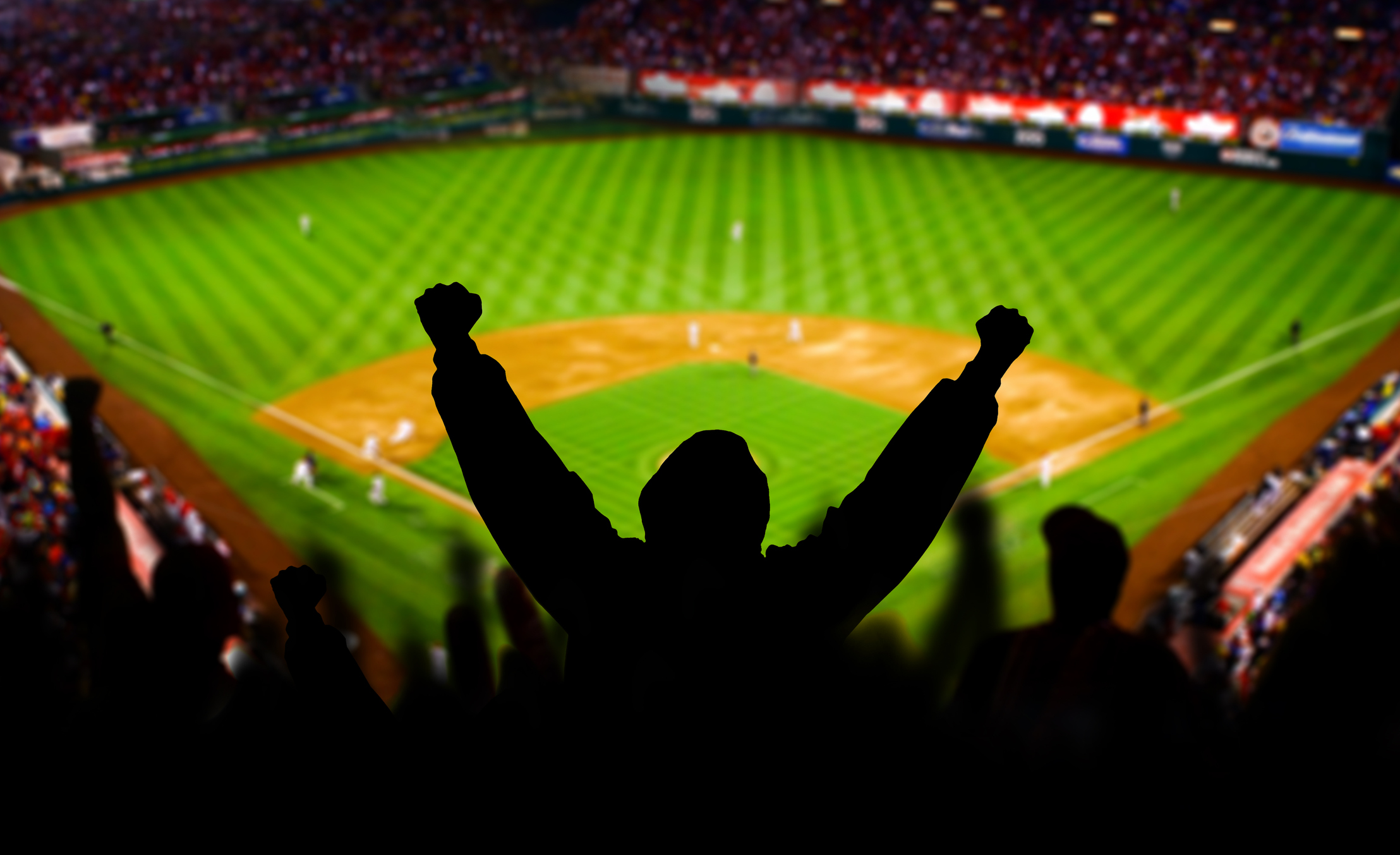Students in Goizueta Professor of Marketing Mike Lewis’ Sports Marketing class had a unique opportunity to analyze surveys distributed by the Atlanta Braves, Hawks, Falcons, United and Dream. This was the third year “The Atlanta Sports Survey” was assigned as a class project to MBA and BBA students. This is how the assignment works: Students help come up with questions to ask sports fans about their fandom and preferences. The major Atlanta sports teams make necessary adjustments then email the survey to their fans.
This year, team representatives including Atlanta Hawks Vice President of Analytics David Elgin, Braves Director of Business Intelligence Justin Watkins, AMB Sports + Entertainment Director of Fan Experience Georgia O’Donoghue and Dream Director of Marketing and Communications Dan Goldberger took part in helping construct the survey.
Students analyzed about 2,000 surveys and presented their findings in class. While we can’t share all of the results, we can provide a few interesting tidbits.
For example, one group looked into where “super” fans and “lukewarm” (neutral) fans of the five teams watched games. They found that super fans overwhelmingly preferred to watch games in person compared to neutral fans who typically watched games on television in their own homes. The students suggested the teams run promotional advertisements whenever games are on television so neutral fans are encouraged to purchase a ticket to watch the game in person. Results also showed neutral fans are likely to go and return to a game if the overall stadium experience is improved.


Another group of students looked into what brought people to Falcons, United, Braves and Hawks games. Results showed ticket prices, atmosphere and seating were big factors. On the social media side, the students found Facebook and Instagram are the best way to reach all five of the professional teams’ fans. Snapchat was the least popular, but usage is high among fans of the Hawks and Dream.

Factors influencing initial fandom was a focal point for another group of students. They found that location (current residency and hometown) and players are the greatest influencing factors. On the flip side, the least influencing factors include uniforms, logos and friends.

Results from the students’ project also found factors that drive ongoing fandom include having a successful franchise and ability to stay competitive and win, family members supporting a team causes fans to remain supporters, a great live game experience will encourage fans to continue attending games, and fantasy sports options keep fans engaged and grow awareness around the team.











